
Encrypting Communications
Overview
Encrypt networks communications using SSL (Secure Sockets Layer). This function is useful for establishing secure connections and protecting communications from alterations and interceptions.
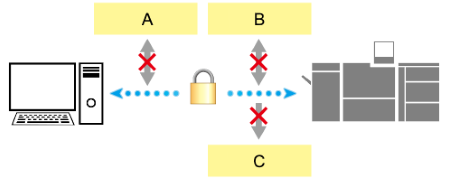
A: Prohibits spoofing
B: Prohibits tampering
C: Prohibits interception
There are 3 system SSL settings, listed here in order of least secure to most secure.
1. Using the system's default certificate
2. Using a certificate created on the system
3. Using a certificate provided by a CA (Certificate Authority) upon request
This section shows the creation of a certificate on the machine while logged in to Web Connection as the administrator.
Installing Certificates
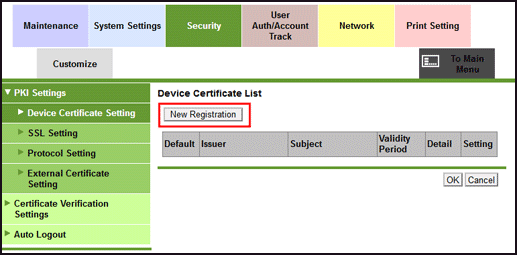

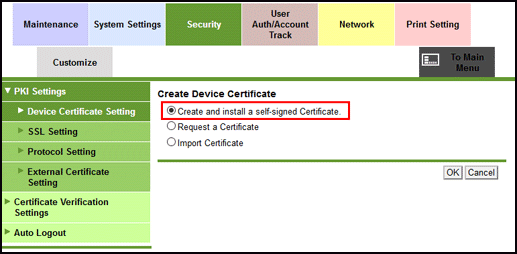

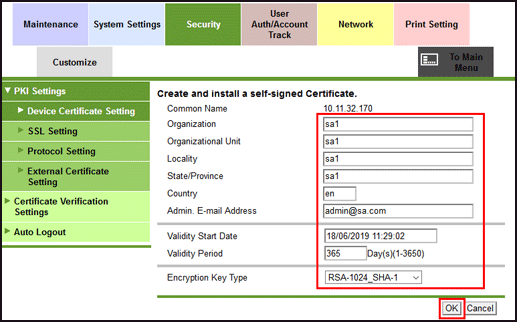
For [Country], enter the two-digit single-byte country code specified by ISO3166.
[Validity Period] Setting Range: 1 to 3650. 30 to 60 days is recommended as standard.
Using ECDSA encryption (Elliptic Curve Digital Signature Algorithm) for [Encryption Key Type] allows you to achieve even more secure communications. Also, encryption is performed using a shorter key length, thereby, enabling a reduction of the network load.

Enable the SSL
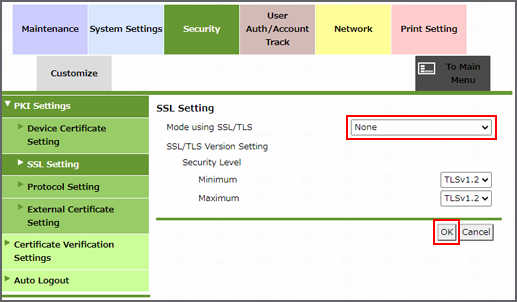
In case of [SSL/TLS Version Setting], it is recommended to set [Minimum] to [TLSv1.0] and [Maximum] to [TLSv1.3].

Allocating Certificates
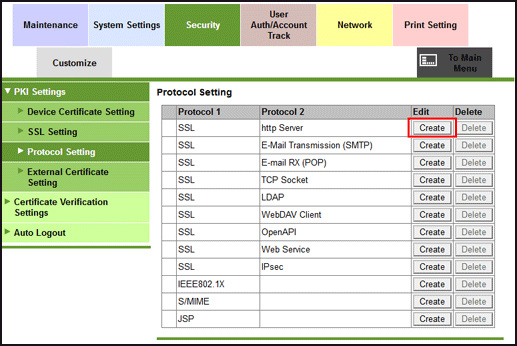

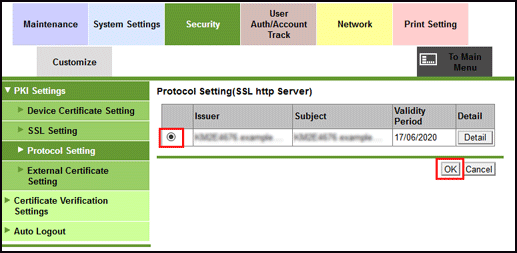

 in the upper-right of a page, it turns into
in the upper-right of a page, it turns into  and is registered as a bookmark.
and is registered as a bookmark.